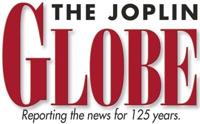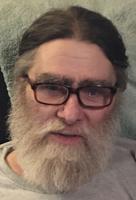A Kansas study into the effectiveness of facial coverings at slowing the spread of the coronavirus could soon be expanded to border counties in Missouri.
The study shows that Kansas counties with mandatory mask-wearing orders saw about half as many new infections as counties that did not. The study findings come at a time when Gov. Laura Kelly is calling for strengthening the state's current mask order, which gives counties the flexibility to decide whether they want to enforce it or not.
The optional nature created the opportunity for research, said Donna Ginther, director of the University of Kansas Institute for Policy and Social Research.
"We think of what Kansas did as a natural experiment," Ginther said. "Some counties were given the option to opt out, and more than 80 percent did. Certain counties said they would not enforce it."
Ginther, a Roy A. Roberts Distiguished Professor of Economics at the University of Kansas, and associate researcher Carlos Zambrana cross referenced infection numbers with whether the county had a mask mandate or not. They tracked counties such as Johnson and Sedgwick that abided by the ordinance, as well as counties such as Cherokee that opted out, as well as counties such as Crawford that did not opt out but announced it would not be enforced.
After studying the numbers, researchers determined that counties with a mask order saw the seven-day rolling average of cases per 100,000 population start to decrease and eventually remain steady through the end of July and through October. The same average for the other two types of counties has risen steadily since the state's mask order was issued.
The researchers concluded that mask orders make a difference at controlling the spread of COVID-19 — the counties adhering to the order are seeing seven fewer cases per 100,000 people per day.
Kansas on Wednesday set new records for reported coronavirus cases and COVID-19-related hospitalizations, with a rolling seven-day average of 1,084 new cases and 35 hospitalizations. As of Friday, the state reported 85,181 cases, 3,832 hospitalizations and 1,029 deaths since the beginning of the pandemic.
Ginther said the study did not track actual mask wearing, and that data about how many people wore masks in nonmandated counties was not available. But Ginther said data between counties that opted out and counties that didn't enforce were similar.
"If we compare them, the numbers of infections look about the same," Ginther said. "It really appears to be the mask mandate driving our results."
For now, Kelly and top Republicans in the state's Legislature are working to persuade counties that are hot spots for the coronavirus to impose their own mask mandates, rather than strengthening the statewide order. On Wednesday, Kelly said she would not give much time to that approach.
"I don't have a firm drop-dead rate, but I'll know it when we get there," Kelly said.
Kelly's order, issued on July 2, came about a month after a state law went into effect that allowed the state's 105 counties to opt out, according to information from The Associated Press. The Republican-controlled Legislature forced Kelly to accept local control over mask rules, restrictions on businesses and limits on public gatherings after she imposed a statewide stay-at-home order for five weeks, ending in early May.
A special session might still be called by the governor, possibly to remove that opt-out provision. Kansas lawmakers aren't scheduled to reconvene until January.
Kansas is not alone in reporting high numbers, according to a report from Missouri Independent. Missouri has reported an average of 1,802 new infections every day in October, with a peak of 3,061 reported on Thursday. The worst outbreaks have been in rural counties.
Missouri hospital administrators in a conference call with Gov. Mike Parson on Thursday said that urban health centers are refusing COVID-19 patients from rural centers that cannot provide adequate care, and asked Parson for a statewide mask mandate. Parson has resisted such statewide orders throughout the pandemic.
Ginther said the study has drawn interest from several states in Midwestern areas because it has more similarity as opposed to studies that revolve around cities such as New York City. They are looking at expansions of the study to include bordering counties, such as Jasper.
"This is a real simple story," Ginther said. "A mandate appears to slow the growth. Given how we are moving toward winter and more activities will be moving indoors, it's increasingly important."
The Associated Press and Missouri Independent provided information for this report.















Commented
Sorry, there are no recent results for popular commented articles.